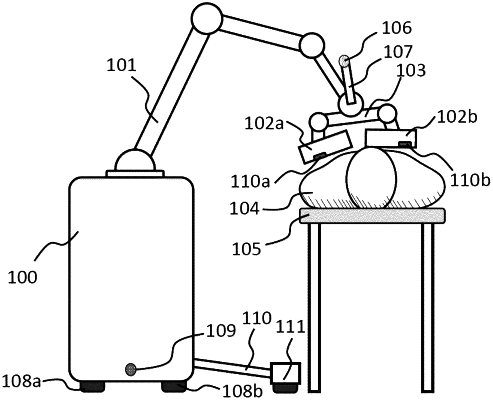| CPC A61B 6/037 (2013.01) [A61B 6/4258 (2013.01); A61B 6/4266 (2013.01); A61B 6/5235 (2013.01)] | 22 Claims |

|
1. An imaging system comprising:
a mechanical arm configured to be positioned to a desired location by a user;
at least one gamma camera panel connected to the mechanical arm, wherein the gamma camera panel comprises gamma camera sensors with position and energy sensing resolution, wherein the gamma camera panel provides an imaging field of view that is larger than 15 degrees;
a camera mounted in such a way as to observe at least a portion of a patient; and
at least one processor and a memory operatively coupled with the at least one processor, the camera, and the gamma camera sensors, the memory having instructions for execution by the at least one processor that cause the at least one processor to:
read a first gamma-ray photon sensing event received from the gamma camera sensors;
provide a first position and orientation of the gamma camera panel with respect to a body of the patient;
co-register the first gamma-ray photon sensing event to the body of the patient using the first position and orientation;
read a second gamma-ray photon sensing event received from the gamma camera sensors;
provide a second position and orientation of the gamma camera panel with respect to the body of the patient,
co-register the second gamma-ray photon sensing event to the body of the patient using the second position and orientation; and
reconstruct a 3D distribution of gamma-ray emitting radioisotopes inside the patient by using first and second co-registered sensing events.
|